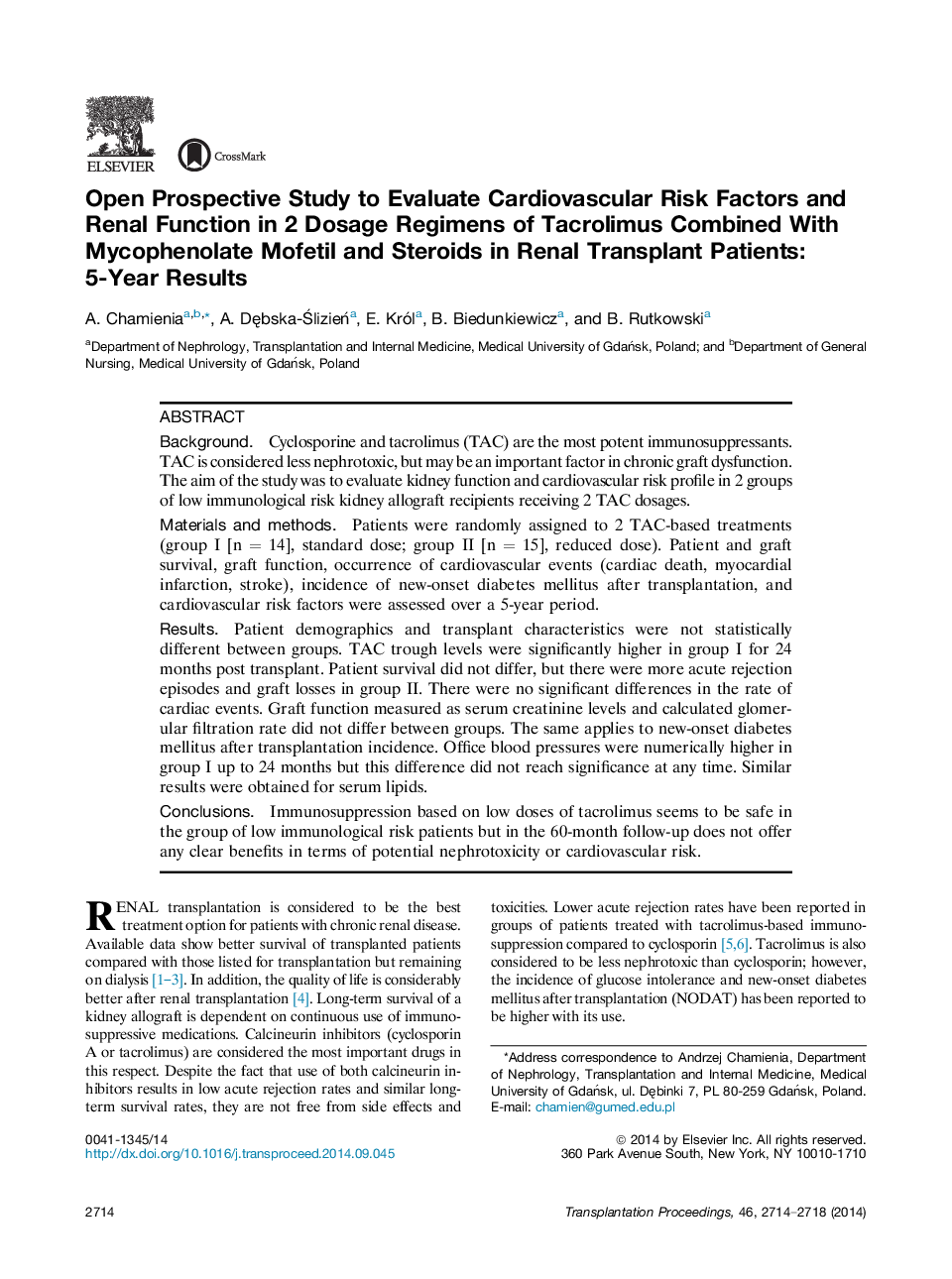| Article ID | Journal | Published Year | Pages | File Type |
|---|---|---|---|---|
| 4257969 | Transplantation Proceedings | 2014 | 5 Pages |
BackgroundCyclosporine and tacrolimus (TAC) are the most potent immunosuppressants. TAC is considered less nephrotoxic, but may be an important factor in chronic graft dysfunction. The aim of the study was to evaluate kidney function and cardiovascular risk profile in 2 groups of low immunological risk kidney allograft recipients receiving 2 TAC dosages.Materials and methodsPatients were randomly assigned to 2 TAC-based treatments (group I [n = 14], standard dose; group II [n = 15], reduced dose). Patient and graft survival, graft function, occurrence of cardiovascular events (cardiac death, myocardial infarction, stroke), incidence of new-onset diabetes mellitus after transplantation, and cardiovascular risk factors were assessed over a 5-year period.ResultsPatient demographics and transplant characteristics were not statistically different between groups. TAC trough levels were significantly higher in group I for 24 months post transplant. Patient survival did not differ, but there were more acute rejection episodes and graft losses in group II. There were no significant differences in the rate of cardiac events. Graft function measured as serum creatinine levels and calculated glomerular filtration rate did not differ between groups. The same applies to new-onset diabetes mellitus after transplantation incidence. Office blood pressures were numerically higher in group I up to 24 months but this difference did not reach significance at any time. Similar results were obtained for serum lipids.ConclusionsImmunosuppression based on low doses of tacrolimus seems to be safe in the group of low immunological risk patients but in the 60-month follow-up does not offer any clear benefits in terms of potential nephrotoxicity or cardiovascular risk.
